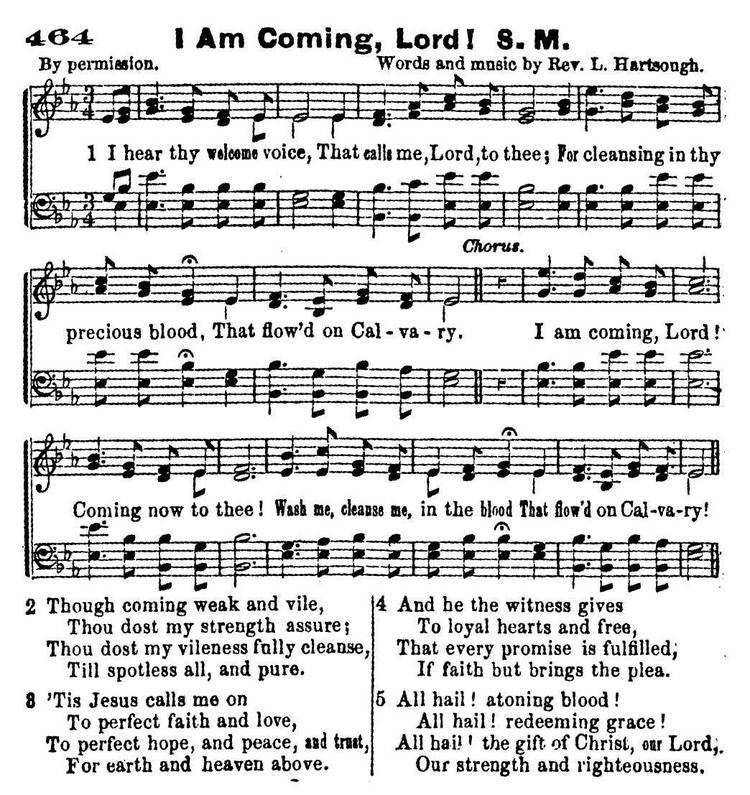 | ||
"Gwahoddiad" is a Welsh hymn of American origin.
Contents
"Gwahoddiad" (Welsh for invitation), also known as Arglwydd Dyma Fi and by its first line Mi glywaf dyner lais, was originally the English-language gospel song "I Am Coming, Lord", the first line of which is I hear thy welcome voice. The English words and the tune were written in 1872 by the American Methodist minister and gospel songwriter Lewis Hartsough (1828–1919) during a revival meeting at Epworth, Iowa, where Hartsough was minister. Hartsough was musical editor of The Revivalist, a collection of hymns which had begun in 1868 and continued through 11 editions. The English words with Hartsough's tune first appeared in the 1872 edition.
The tune is in 3/4 time, with fermatas at the option of the songleader. The metrical pattern is 6686 with refrain 5576. The rhyme scheme is abcb; the second and fourth lines rhyme, whether in the verse or in the refrain.
In 1906 the American gospel singer and composer Ira D. Sankey wrote:
The words and music of this beautiful hymn were first published in a monthly entitled Guide to Holiness, a copy of which was sent to me in England. I immediately adopted it, and had it published in Sacred Songs and Solos. It proved to be one of the most helpful of the revival hymns, and was often used as an invitation hymn in England and America.
The Welsh version Gwahoddiad was translated by Calvinistic Methodist minister and musician Ieuan Gwyllt (literally John the Wild, bardic name of John Roberts) (1822–1877). It has become so well known in Wales that, despite its American origin, many people believe it to be an indigenously Welsh hymn.
"I Am Coming, Lord" is an invitation song, typically sung at the end of a sermon in evangelistic meetings. The tune is usually called WELCOME VOICE in American hymnals and may be labeled CALVARY in British hymnals. During World War I Hartsough expressed gratification not only for having heard the song in various languages but also for having learned of its popularity with soldiers in the trenches of Europe.
Consider now the lyrics, with the Welsh version printed first.
Welsh words
"Gwahoddiad"
The Roberts (Gwyllt) translation has four verses. The first verse is a virtual equivalent of Hartsough's original (see infra). Roberts essentially skipped Hartsough's second verse and then conflated the remaining three verses into similar but not verbatim thoughts matching Welsh to the metrical pattern of Hartsough's tune.
Original English words
"I Am Coming, Lord!" as it appeared in the Revivalist (1872, p. 231, No. 464):
The fourth verse from Hartsough's original has attracted some clarification from editors. Roberts (Gwyllt) in the Welsh version simply massaged the concerns away via the translation. English-language editors have sometimes gone the way of B. B. McKinney in simply eliminating the verse or Elmer Leon Jorgenson in revising it as follows:
American hymn editor William Jensen Reynolds asserted in 1976, as he had done earlier, in 1964, another verse, between the third and fourth verses above:
'Tis Jesus who confirmsThe blessed work within,By adding grace to welcomed grace,Where reigned the power of sin.Notable recordings
Gwahoddiad has been used as the title of a number of albums:
A number of notable recordings appear on other records:
